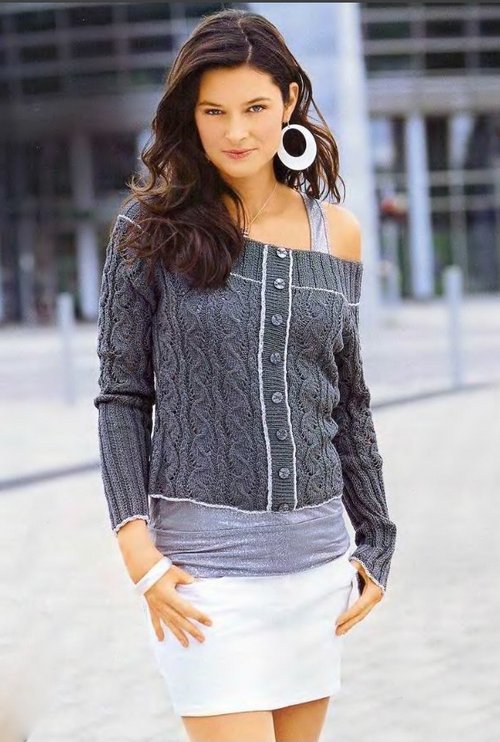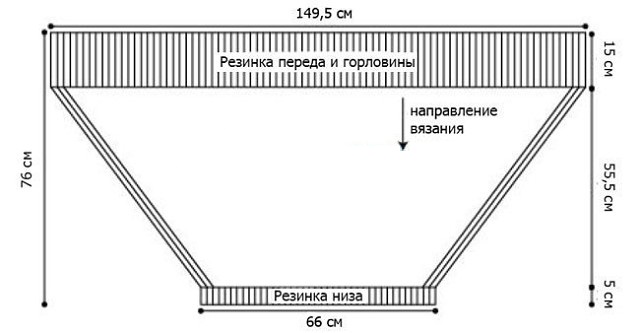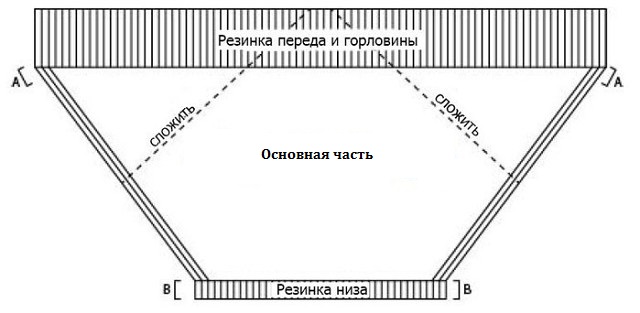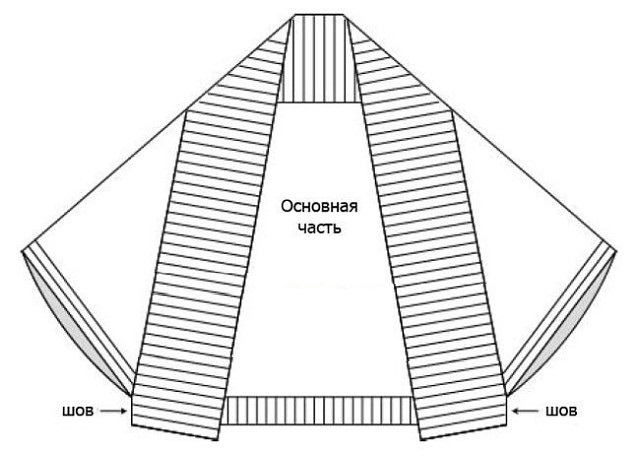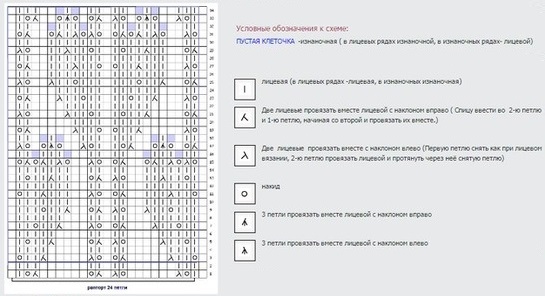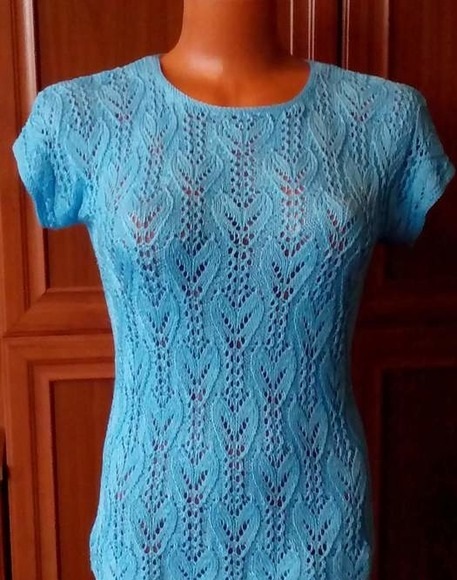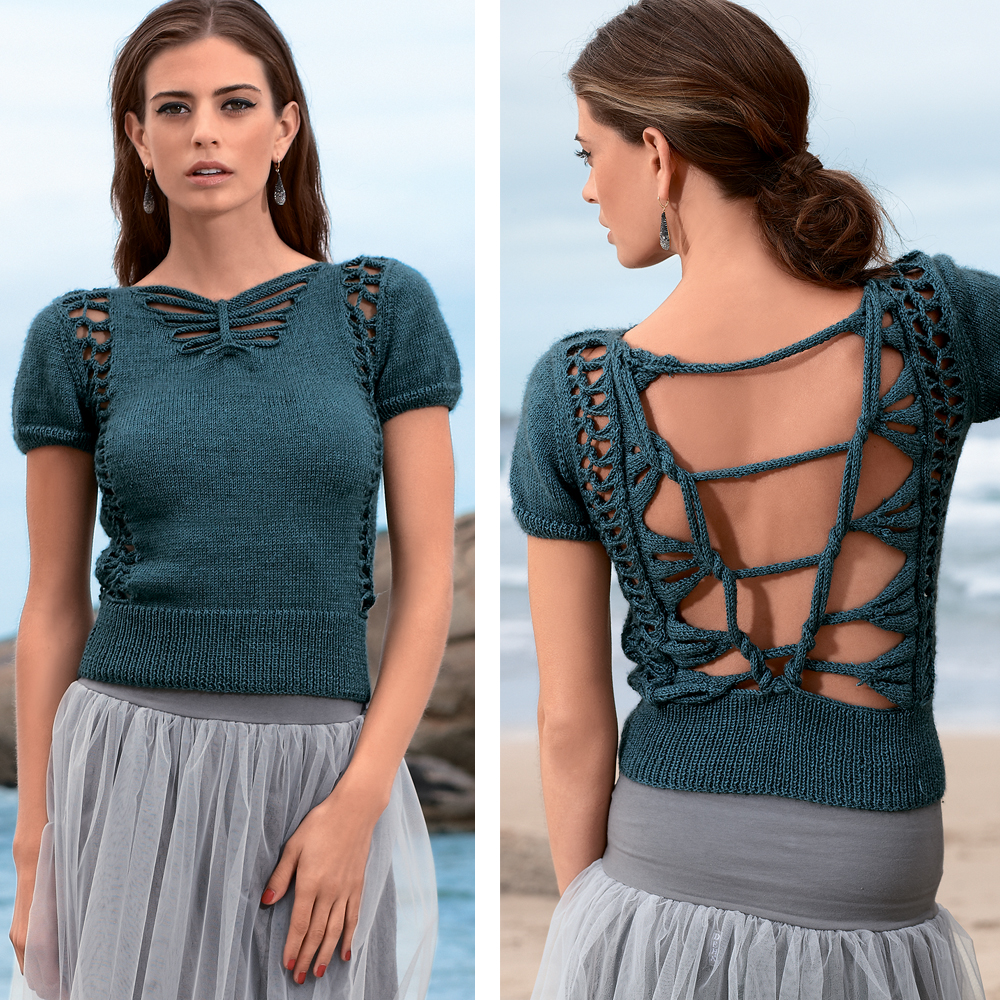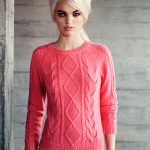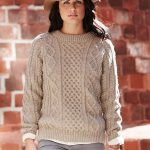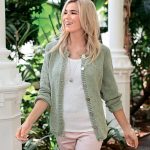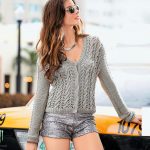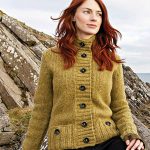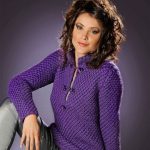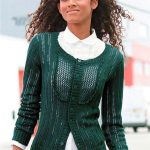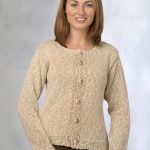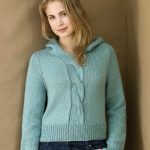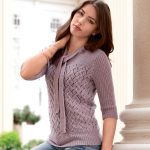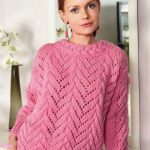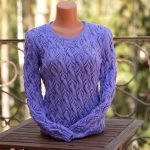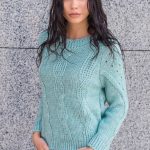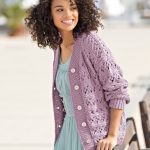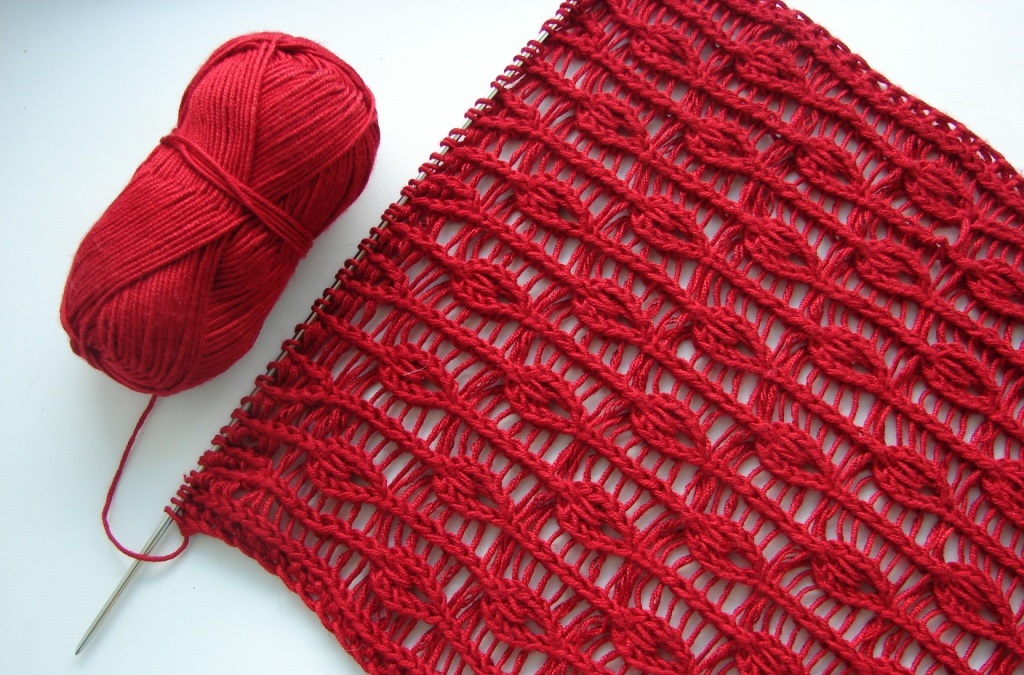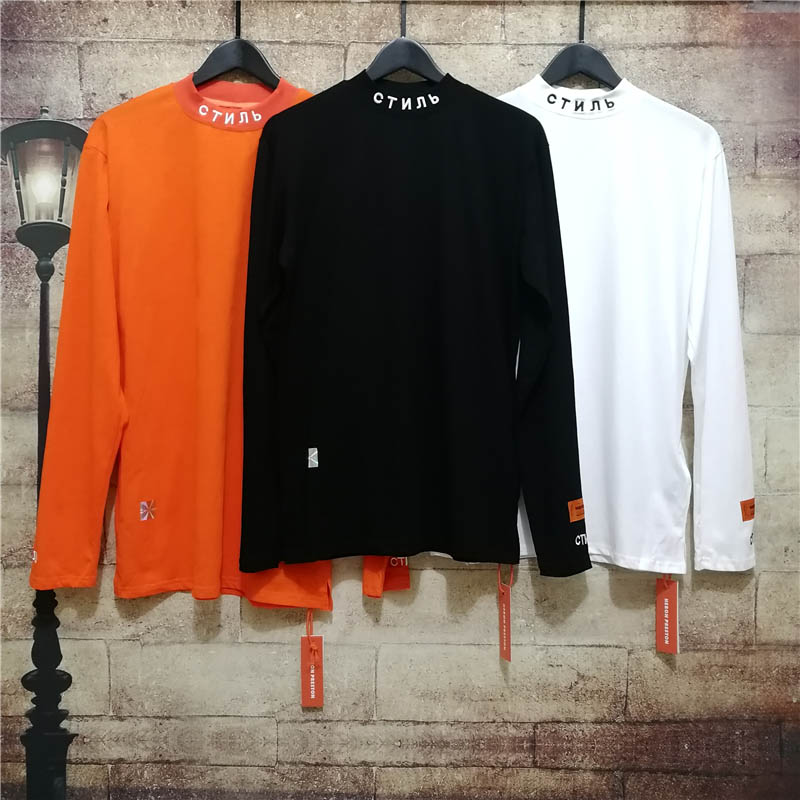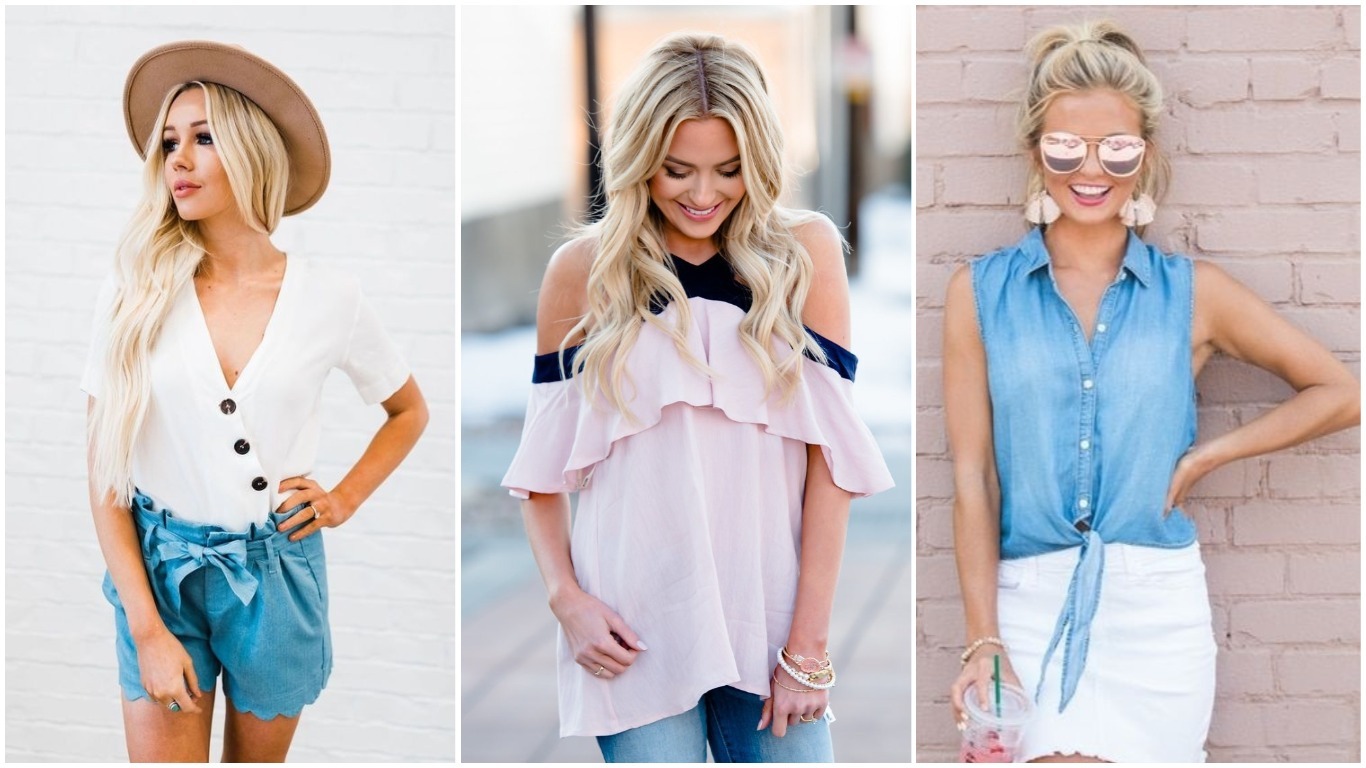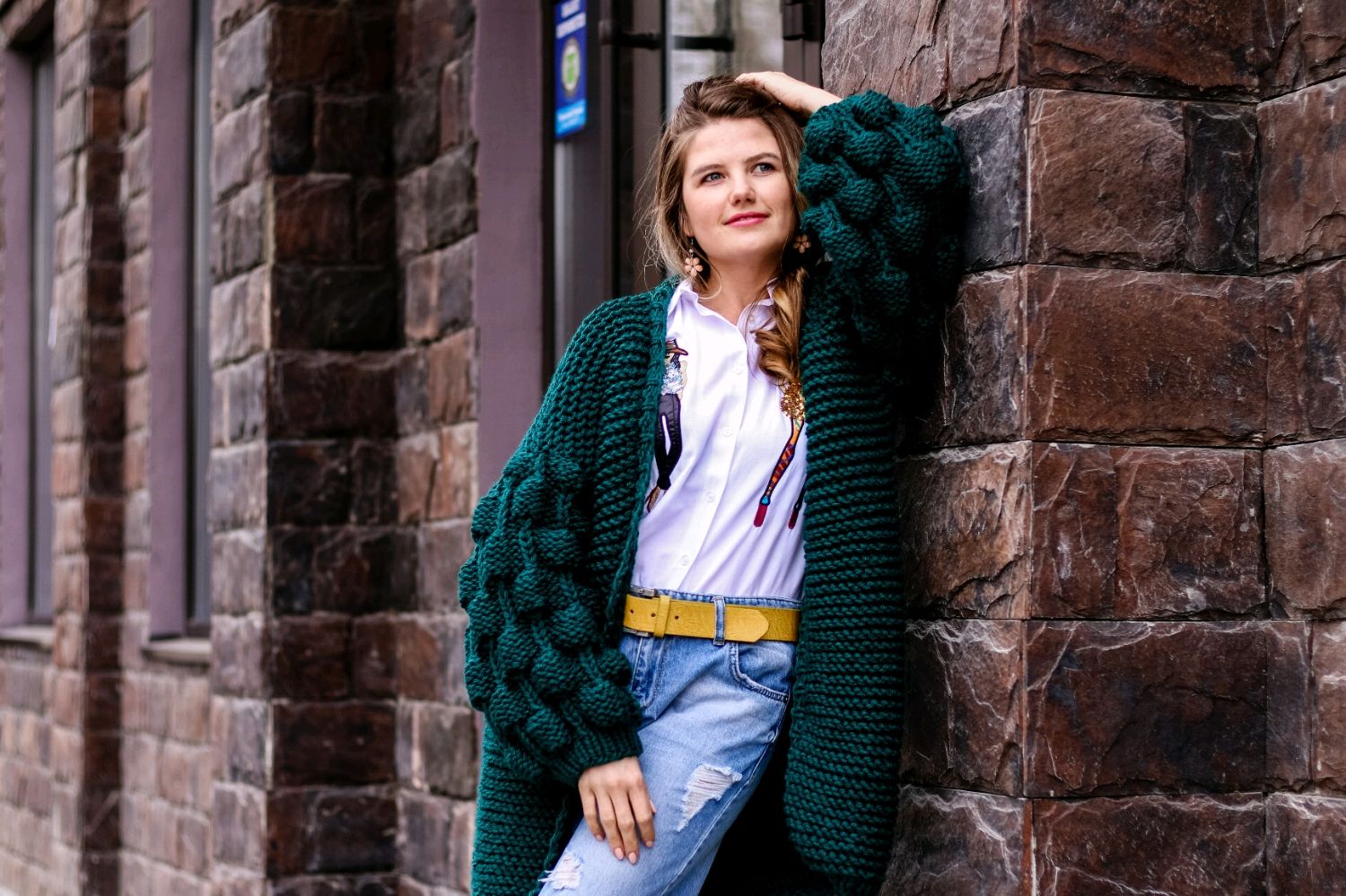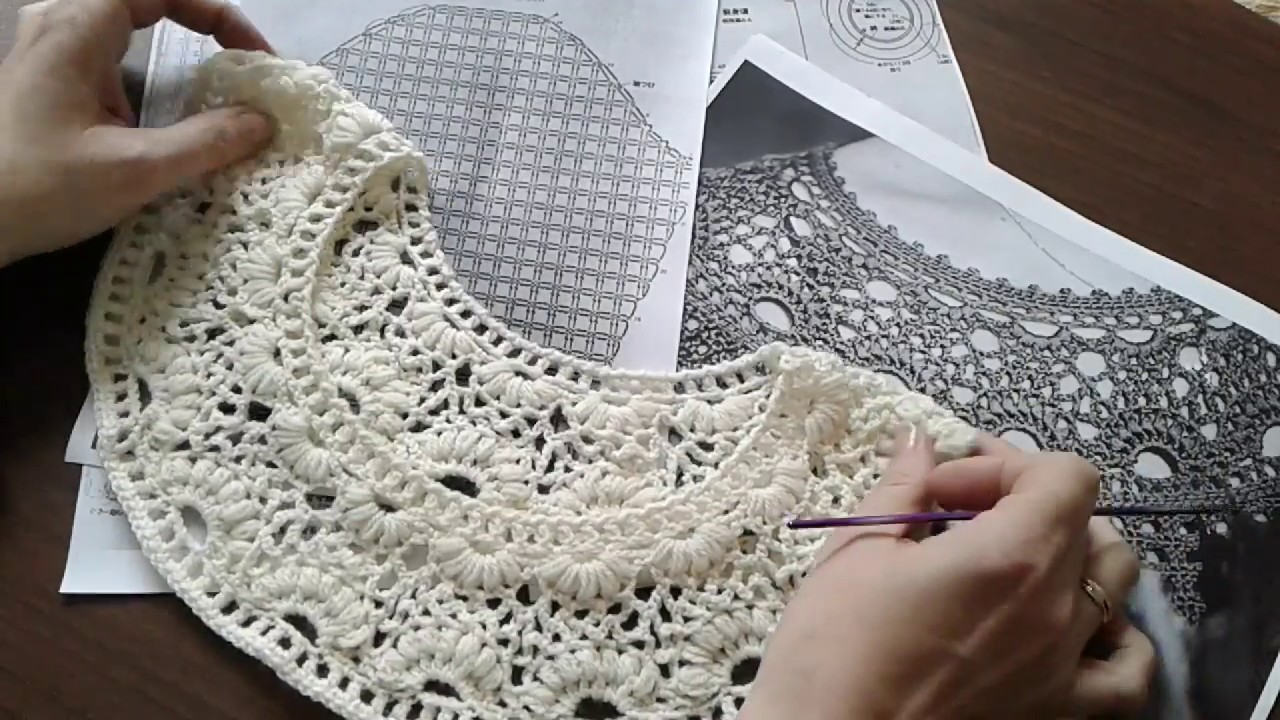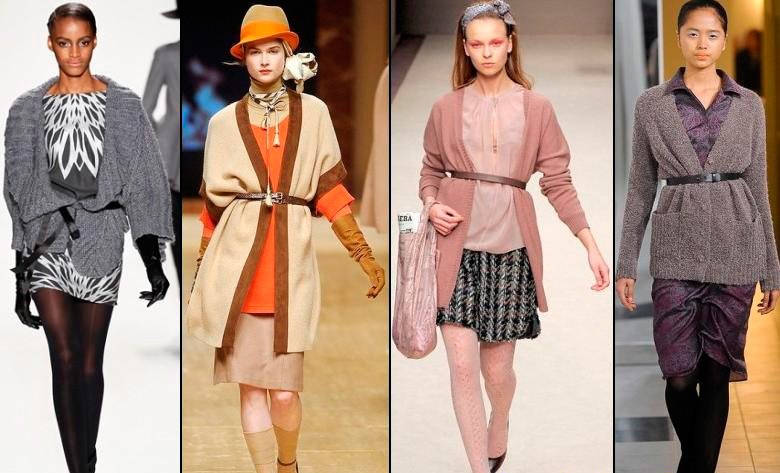Knitted clothes are loved by women of all ages not only because of their originality. A piece of the craftswoman's soul fills each created thing with living warmth and positive energy. With sufficient experience and skill, in a few evenings you can weave an elegant shawl, a cozy cardigan, fluffy winter socks or even a sexy openwork swimsuit. And for needlewomen who decide to knit a sweater with knitting needles for a woman, new models with a description of the entire process, collected in the article, will be an excellent help during the implementation of a creative idea. A thing created with your own hands and originally decorated will definitely become a favorite, because on its basis it will be possible to create dozens of stylish images.
Current models
Modern designers often turn to the theme of hand-knitted sweaters, so the number of models demonstrated on the catwalk is large today. They can be conditionally divided into groups:
- with voluminous loose or strong knitting;
- openwork;
- in the style of smooth knitwear of various thicknesses.
It is recommended to choose a suitable option taking into account the season, the prevailing style in clothing, your favorite color scheme, and other wardrobe elements that can harmoniously combine with the finished item. For example, the best time to wear knitted openwork blouses is summer. In this case, light skirts or shorts will be an ideal addition. Knitted blouses, which are based on a large voluminous pattern, on the contrary, are more suitable for cold weather. They can be complemented with jeans or formal trousers, in any case it will be warm and cozy. In addition, with the help of various braids, stripes, geometric shapes, you can adjust the individual features of the silhouette. Large knitting is not only expressive and stylish, it allows you to constantly replenish knitting patterns with bright new items.
Oversized sweaters are extremely popular today. However, the apparent shapelessness, the external illusion of the absence of a certain size of the product also require the efforts and skills of the craftswoman. A knitted sweater must have all the proportions in accordance with the parameters of the female body.
The appearance of a knitted product largely depends on the design of the neckline. Fashionable models can be complemented by a V-neck. This is convenient if a shirt with a turn-down or stand-up collar is worn under the sweater. Items with a boat-neck are relevant: they visually increase the size of the shoulder girdle and add sexiness to it. A stand-up collar and a turtleneck are universal. This design looks strict and is more typical for a sweater. The finished item is very comfortable and versatile, there is no need to think about the wardrobe elements with which it can be combined.
Selecting yarn
Having determined a suitable blouse model for knitting, the next step is to select materials and tools. The composition of the threads should be based on factors such as:
- purpose of the product;
- the intended design and its dimensions;
- girl's age;
- clothing model.
Items that will be worn directly over underwear should be knitted from threads with the maximum cotton content. Synthetics are not as hygienic, although they have a longer service life. Wool, including angora, retains heat better, it is ideal for products for the cold season. One of its disadvantages is the possibility of shrinkage when wet, and the possibility of changing the style when dried in a suspended state.
The next step before making a sweater with knitting needles is calculating the required amount of thread. You will need to make a trial fragment of the pattern with the selected yarn and knitting needles. Having knitted a square with a side of 15 cm, you need to calculate how many loops it has and determine the length of the thread used. Then, using the pattern you have drawn up, recalculate how many similar squares it contains. This method is more accurate, but requires accuracy in calculations. If you plan to knit in accordance with a specific master class, it is better to use the recommendations collected in it.
Despite the existing variety of yarn colors, the current shades are cherry, dark blue, terracotta, dark olive. Romantic pastel shades are recommended for light openwork blouses: blue, peach, beige, milky, white. Incredibly expressive products contain color combinations: white with black, pink with blue and turquoise, red with purple.


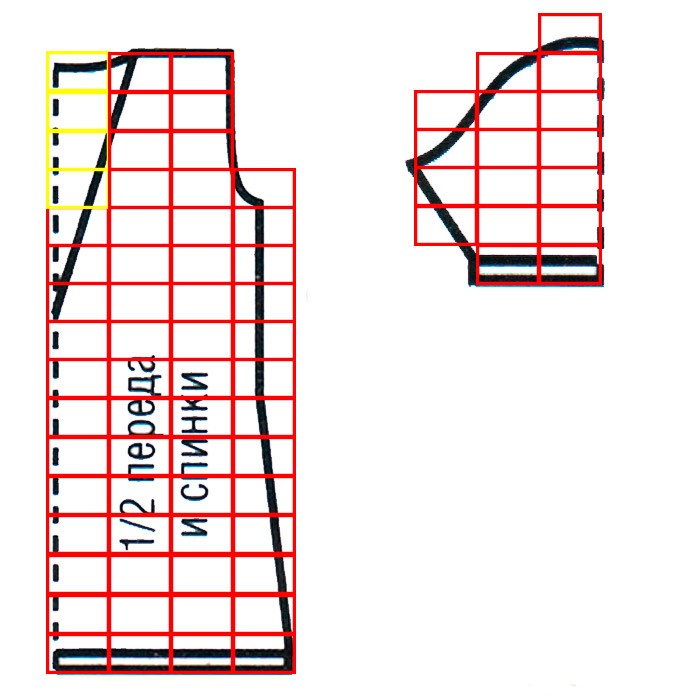
Manufacturing stages taking into account the model
Ready-made master classes will be useful in the work, step by step prompting how to knit a new model of a blouse for a woman, with a description of the process will also help to understand the decoding of the symbols, additional practical advice. The collected schemes will allow a girl of any age and build to choose the best option for herself.
With braids
The "braid" pattern is similar to the "tourniquet", only here not two, but three stripes are intertwined. To make the pattern beautiful, the blouse is knitted with knitting needles No. 2 and 3.5. In the case of knitting a tourniquet, in addition to the two main tools, one additional one will be needed (for removing loops). For the braid, two additional knitting needles are used. The amount of yarn is calculated according to the above scheme.
The knitting sequence is as follows (the pattern is designed for size 46):
- Knit 12 rows of 104 stitches with #2 knitting needles, using an elastic band of alternating front and back stitches.
- In the 13th row, switch to knitting needles No. 3.5 and make the pattern according to the diagram. The edge loop is removed without knitting, and the final loop is knitted purlwise.
- The fabric is knitted using a pattern with the dimensions indicated for the selected model in the diagrams of the front, back, and sleeves.
- All the details are sewn together, after which the jacket is decorated as desired.
The cords and braids tighten the fabric a little, which must be taken into account when accurately calculating the width of the product.
Braids can be done in the following variations: one in the middle of the fabric, two symmetrically or asymmetrically relative to each other, many braids located at certain intervals.
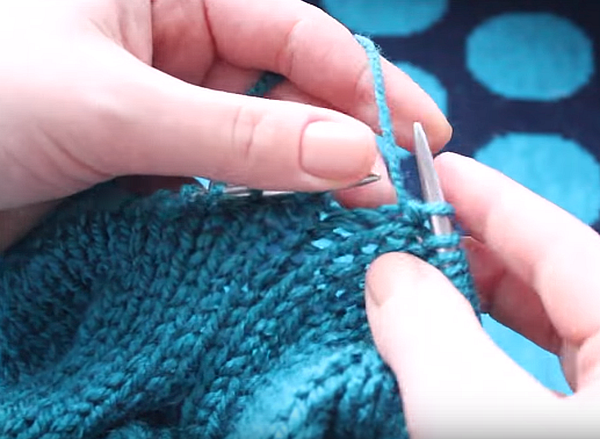

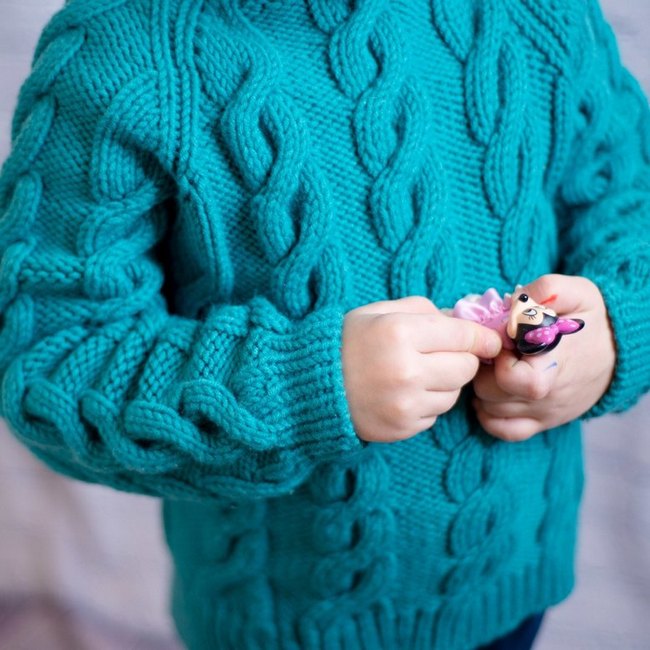
With batwing sleeve
This sleeve has been known since Soviet times, but recently its resemblance to a bat has slightly diminished due to a less massive sagging downwards. However, there is still no clear sleeve line. The front and back parts are knitted identically to each other, with the exception of a higher neckline at the back. The neckline at the front can be of any depth.
Necessary tools and materials: yarn, knitting needles (quantity depending on the chosen pattern) of two sizes, knitting pins, fishing line for removing knitted parts if the work is done in a circle. A sample pattern for knitting a batwing sweater will be a good help for beginners.
Knitting stages:
- Knit an elastic band 10–12 cm high.
- In accordance with the pattern diagrams, the selected design is used to make the front and back halves and sleeves.
- The parts are sewn together, starting from the side seams.
- The neckline is tied, and if desired, the raglan lines are additionally knitted.
You should not use too thick threads for knitting a batwing sleeve sweater, otherwise the finished product will look rough and unattractive.
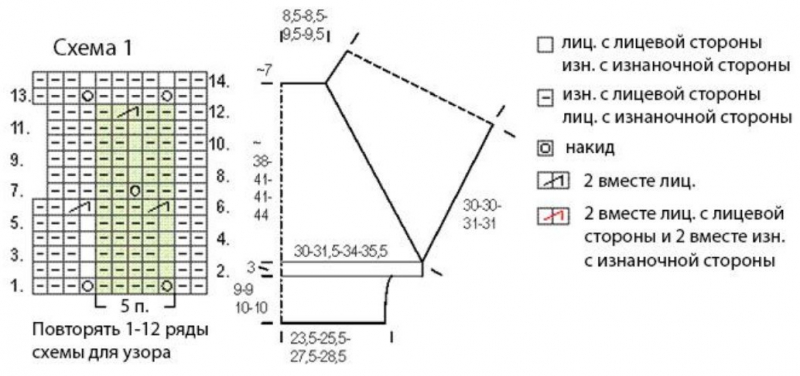
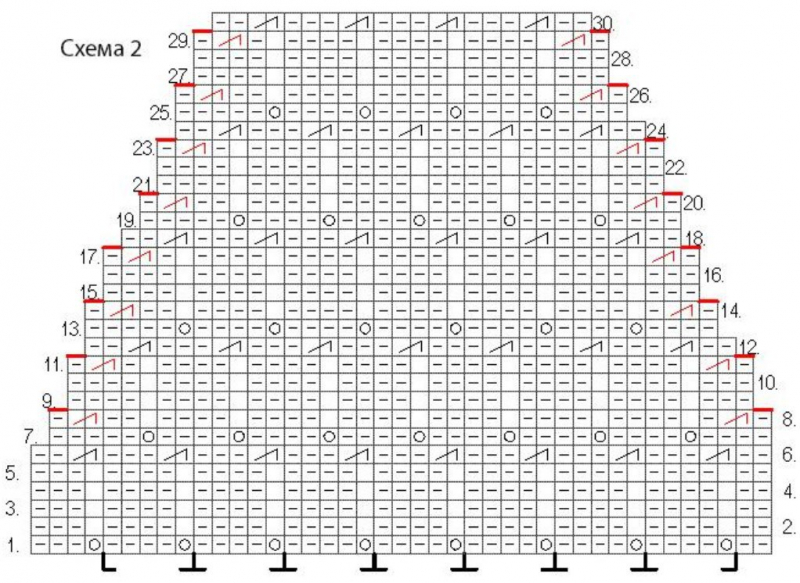

Garter stitch pullover
A stylish pullover can be knitted even with a standard garter stitch. The simplicity of the work is that all rows are knitted with face loops. The pattern looks great on both plain and colored models. It is easy to diversify it with additional details - ribbons, buttons, patch pockets, zippers. For knitting, you need tools and materials: yarn (any quality), circular knitting needles No. 4 and 4.5 80 cm long, stocking needles, knitting pins, markers, a needle with a large eye for sewing, decorative elements.
Since all the loops used are face loops, the fabrics are knitted according to the patterns. The work begins with the raglan yoke.
- The required number of loops is cast on to knitting needles No. 4 and closed in a circle.
- Further knitting is done in the chosen color sequence. The total number of loops is divided into the front and back parts and sleeves. The approximate ratio is as follows: 21–20–42–20–21 loops. All parts are separated from each other with markers.
- Along the raglan line, in every fourth row before and at the end of the marker, make 1 decrease in stitches 17 times.
The back and front parts are started to be knitted 21 cm from the piping. At the same time, it is necessary to cast on 6 loops between the front part and the back for the armholes. Close the loops after 108 rows from the loops cast on for the armholes.
The sleeves are knitted on double pointed needles:
- 3 new loops are added.
- The row is closed, the transition to the next row is marked.
- In every 12th row you need to make one decrease 8 times.
- After 44 cm (approximately 140 rows) the loops need to be closed.
A jacket made with garter stitch can successfully replace a formal office jacket if you choose the right yarn composition and color.
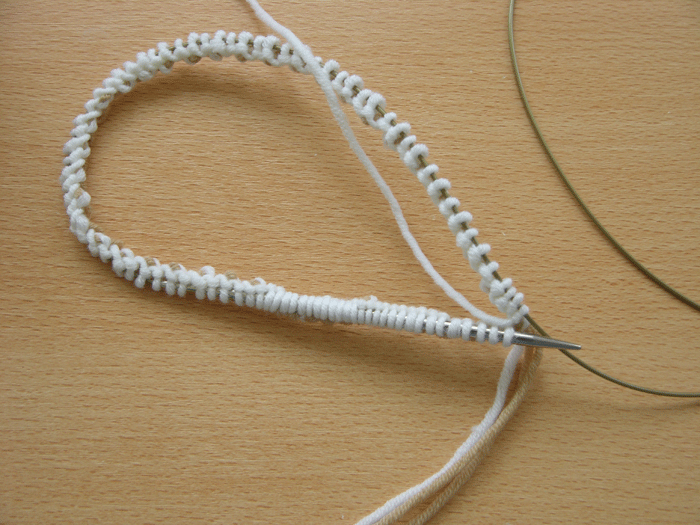
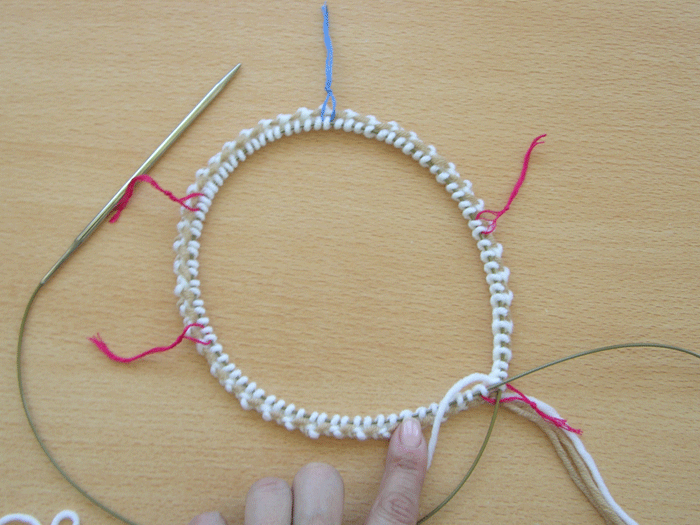
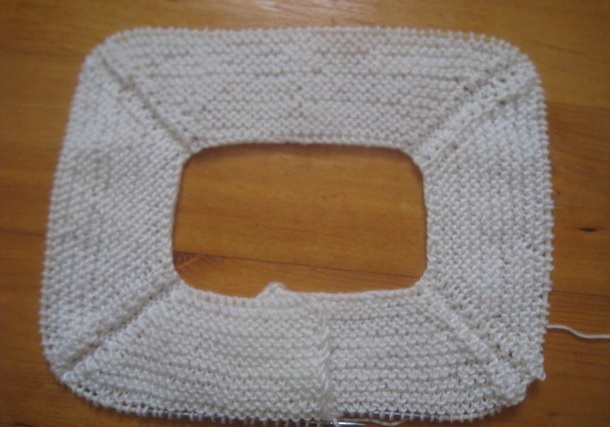
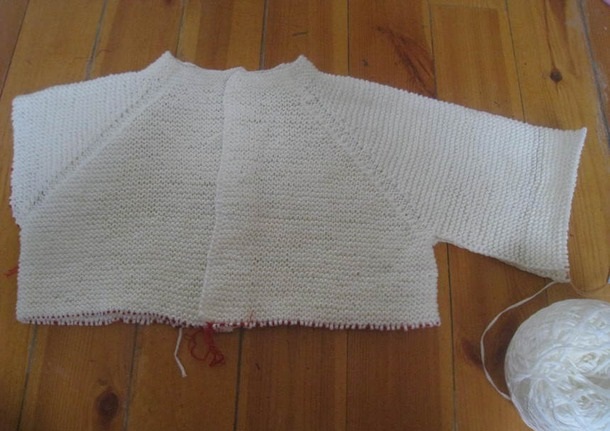

For a full figure
Clothes do a great job of visually adjusting the features of the silhouette. So, for a full figure, it is recommended to knit an elegant blouse with a batwing sleeve, an elongated jacket or an openwork poncho, which can be successfully worn over a turtleneck or your favorite sweater. You should be careful when choosing models of blouses with a large geometric pattern or transverse stripes: they further expand the silhouette. Tight-fitting options are also not suitable. A straight or slightly fitted knitted blazer or a thin but dense cardigan reaching to the middle of the thigh will look much better. To knit the latter for a full female figure, you will need the following tools: knitting needles No. 3 and circular, sewing needles, approximately 700 g of yarn of the selected color. Garter stitch and stockinette stitch are used in the work. You can knit with plain yarn or alternate multi-colored stripes.
The cardigan is knitted from the bottom up in separate elements.
Scheme and description of knitting stages for the back:
- Knit 4 rows of garter stitch on 148 loops (for the back).
- Next, 19 cm is completed using the selected color.
- Loops are added on each side (in every second and third row - 6 times one loop).
- After 16 cm of knitting, the shoulder slope is formed by knitting 2 loops together.
- The loops are decreased until there are 58 of them left, then they are closed with one row.
The front is knitted in the same way. The cardigan has a fastener, so the front part consists of two identical halves. For the sleeve, cast on 50 loops, work with garter stitch, performing 120 rows. Then the product is assembled according to the pattern.
Openwork with kimono sleeves
Many girls will love the openwork blouse, which goes well with jeans, a thin flowing skirt, and strict narrow trousers. For work you will need: viscose yarn (2-3 skeins depending on the size), knitting needles No. 2.5. Knitting is done according to the pattern. Odd rows (No. 1, 3, 5, etc.) are knitted from right to left. Even ones - vice versa. Knitting in the upward direction is done from rows 1 to 34, after which everything is repeated again (from rows 3 to 34).
Summer sweater
Any summer blouse is knitted from thin yarn, which is characterized by hygiene and ease of care. You will need 300 g of thread, preferably cotton, knitting needles No. 4, hook No. 4. The knitting pattern and symbols are reflected in the diagram.
The front rows are knitted according to the pattern, the back rows according to the design. Yarnovers are knitted as purl stitches.
Main stages:
- Knit rows 1–26.
- Repeat the pattern from rows 11 to 26.
- Finish work with rows No. 11–38.
For the back, cast on 110 stitches and knit an openwork pattern with a 58 cm piece of fabric. The front part has a neckline, under which 20 stitches are cast off separately.
Decor options
Knitted sweaters only benefit from additional decor. These can be ribbons, brooches, original buttons, lacing, zippers. Patch pockets or a hood will be an extraordinary addition. Fringe looks stylish and youthful playful. It can be used to decorate the hem and cuffs, while the color should contrast with the shade of the base thread. Ruffles, flounces and lace elements also do not lose their relevance, they always look feminine and charming. Fur trim is suitable for winter sweaters, beads, a scattering of multi-colored rhinestones are suitable for summer ones.
The decor options are limited only by the imagination of the craftswoman. It is worth remembering that all additional elements must be combined with the chosen style and the quality of the threads used. Knitted sweaters are elegant and unique in themselves, often the pattern itself acts as a bright element, excluding the presence of any kind of decor. In addition, items made from fluffy grass-type threads, as well as from lurex yarn, do not need additional decoration.
Video



